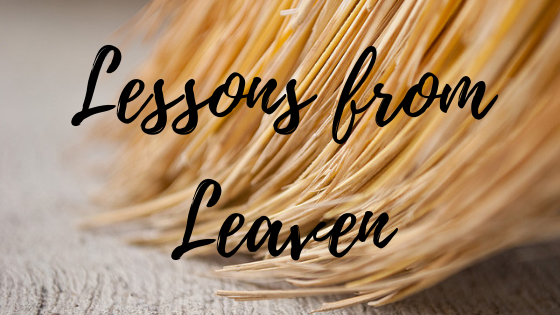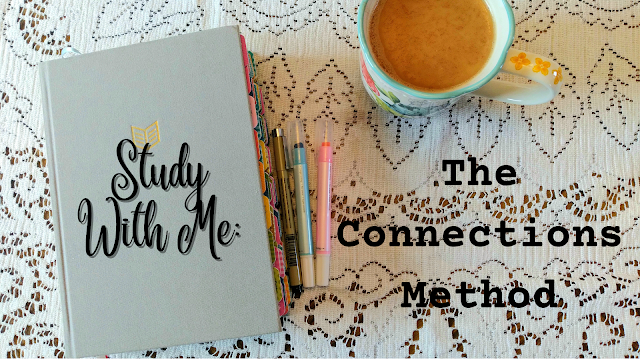Study With Me: Where to Start and My Favorite Bibles
Thank you for joining me in the second post of my Study With Me series! The first two questions that people usually ask when they are planning to begin reading and studying the Bible are, "Where should I start?" and, "What Bible should I use?" So we're going to address both of those questions today.
Where should I start?
It can be a little overwhelming when you flip through your Bible trying to choose a place to start reading. But when you think about the purpose of studying the Bible, it clears things up a bit. I believe our purpose should be to read and study the whole Bible so that we can hear God speaking to us more clearly. If we just read it here and there in little parts and pieces, we are severely limiting our ability to see the themes and connections that run throughout the entire Bible. Where should we start? The answer is simple: at the beginning! Yes, the very beginning.
Genesis is where to start, especially if you have never read the entire Bible through. But even if you have, it's always good to go back and start at the beginning again, and then read and study your way through to the end. I suggest starting with a chapter a day. We will cover some good study methods in a future article, but the best way to begin studying is to read a chapter and then read it again, and maybe even read it a third time.
What Bible should I use?
The best answer I've heard to this question is "the one you will read!" There are many different opinions about translations and which is best, but ultimately the Bible you will read is the best one for you. The Bible was not written in English, so no translation is going to be perfect. Biblical Hebrew and Greek are very different from our modern English, so there can be many ways to translate something to make it understandable in our language. Some versions are translated "thought for thought" and others are "word for word" and still others are a combination of the two. These all have their place in helping us understand the Bible.
You should choose a primary reading and studying Bible in a version that you can understand best. Then you can compare and contrast other versions to get a better picture of what you are reading. This can be done a few different ways depending on your preferences. Here are some things to keep in mind when deciding on a Bible to read:
Do you like to read an actual physical book, or do you prefer reading on a screen?
What size font is comfortable for you?
How big do you want your Bible to be? Will you be studying at home or carrying it with you somewhere?
Do you want space to take notes in your Bible?
Do you want a Bible with extra content like charts, maps, and study notes?
These are a few of my favorite Bibles that I use regularly. (Keep in mind that your preferences may be different than mine.) I use each of these for different reasons:
The She Reads Truth Bible. I've had this Bible for almost a month, and it has become my favorite to study because of the wide margins for taking notes and the single column format. The She Reads Truth Bible is the Christian Standard Bible by Holman Bible Publishers. It's a large Bible, and has some nice features like the key verse art at the beginning of each book, the book introductions, and the reading plans with supplemental verses to look up. There are maps, charts, and timelines throughout. I can't give it my full recommendation, though, because there are two things about it that I don't like at all. One is the thin pages, which is understandable and I can live with, but the other is the "devotionals". There are 189 "written responses to Scripture" in this Bible, and I don't care for them at all because I am not keen on having someone else's opinions, interpretations, and doctrines in my Bible. I'm trying to decide what to do with these. Cover them up with a pretty piece of paper that I can write my own notes on? Maybe. But I am loving those big margins!

The Interlinear Bible on Biblehub.com. An Interlinear Bible shows you the English, the Hebrew or Greek, and the Strong's Concordance numbers for each word or phrase so you can look up literally any word in the Bible in its original language! My husband and I actually own a physical copy of an Interlinear Bible, but it is in four volumes and has pretty small print, and involves looking up the passage, finding the word or words you're looking for, then looking it up in Strong's or a dictionary or lexicon. When we use the online Interlinear at Biblehub.com, it is a much easier and faster process. I use it every time I study! Biblehub.com is also great for comparing different translations.
The NIV Cultural Backgrounds Study Bible. I love this Bible. It has a huge amount of footnotes as you can see in the photo below. These notes are not commentary or opinions. They are based on historical literature and archaeological evidence. There are also charts, maps, and photos of archaeological finds. The whole thing gives a huge amount of cultural context. This kind of information can be found in books and online, but it's nice to have it in one volume right with the scripture where you need it. This is also a pretty big volume, slightly bigger than the She Reads Truth Bible.

The Tree of Life Version, The Complete Jewish Study Bible, and the Stone Edition Tanach. These three give a slightly different, Jewish perspective on scripture that might be new to a lot of Christians, which is precisely why I love them.
The HCSB Large Print Personal Size Reference Bible. I read this Bible when I'm just planning on reading, and not taking notes, or if I want an easy to read, nicely sized Bible. This is the one I take with me if I need to take a Bible somewhere. I like the Holman Christian Standard Bible version, and this particular Bible is also very pretty. It's the one at the top of the stack in the photo at the beginning of this post.
The ESV Journaling Bible by Crossway. I got this Bible years ago when I first started doing Bible art journaling. That is exclusively what I use this one for, except for times when I just want to check and see what the English Standard Version says. This one has wide margins but is still not a huge book, which is nice. The font is small, though, and the format is double column. This works fine for art journaling in this Bible, but a single column one (which Crossway does make) would probably be better for taking notes in. 

In my next post we will look at some different resources that are useful in studying the Bible. I hope this Study With Me series is helpful to you!




Comments
Post a Comment